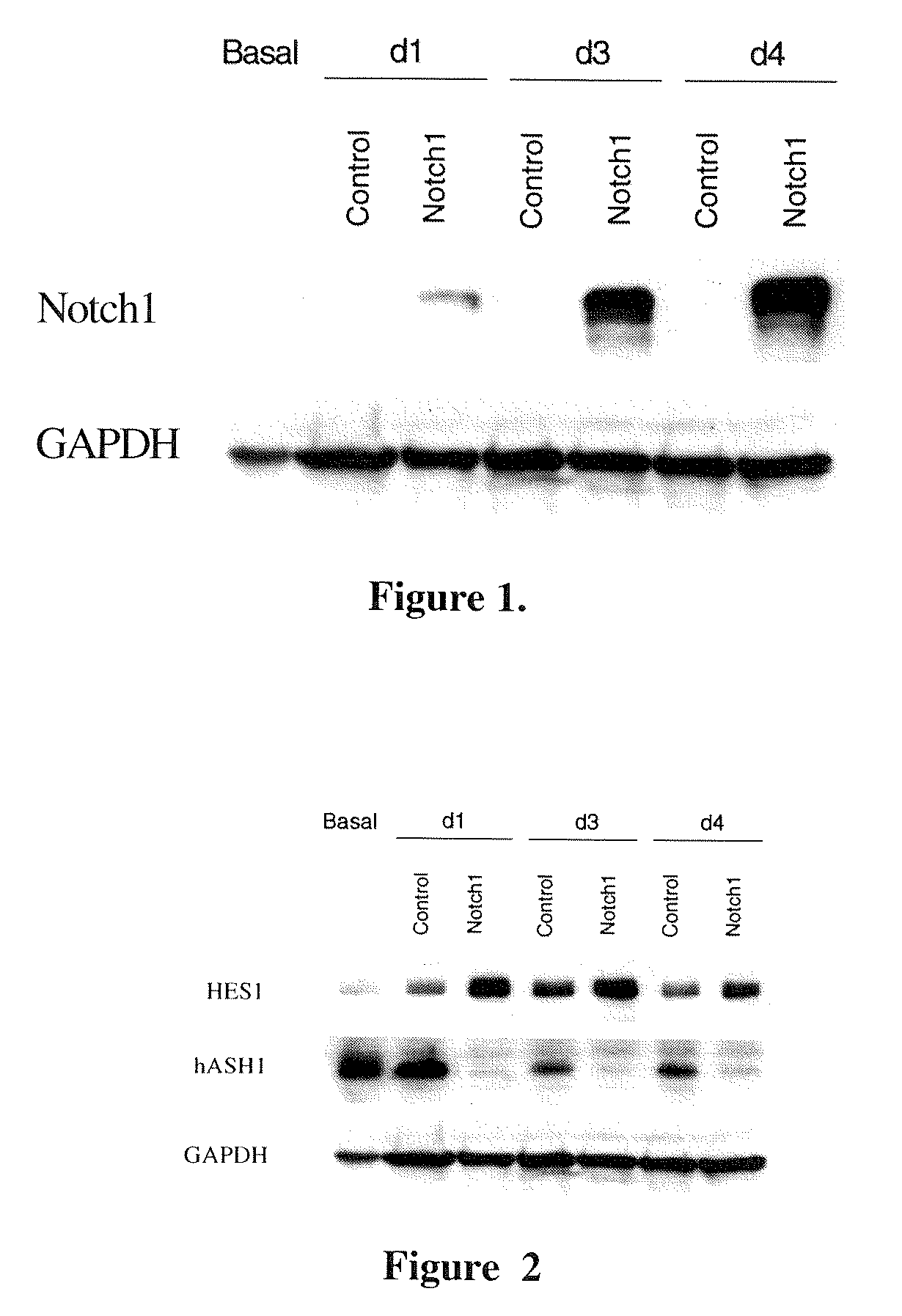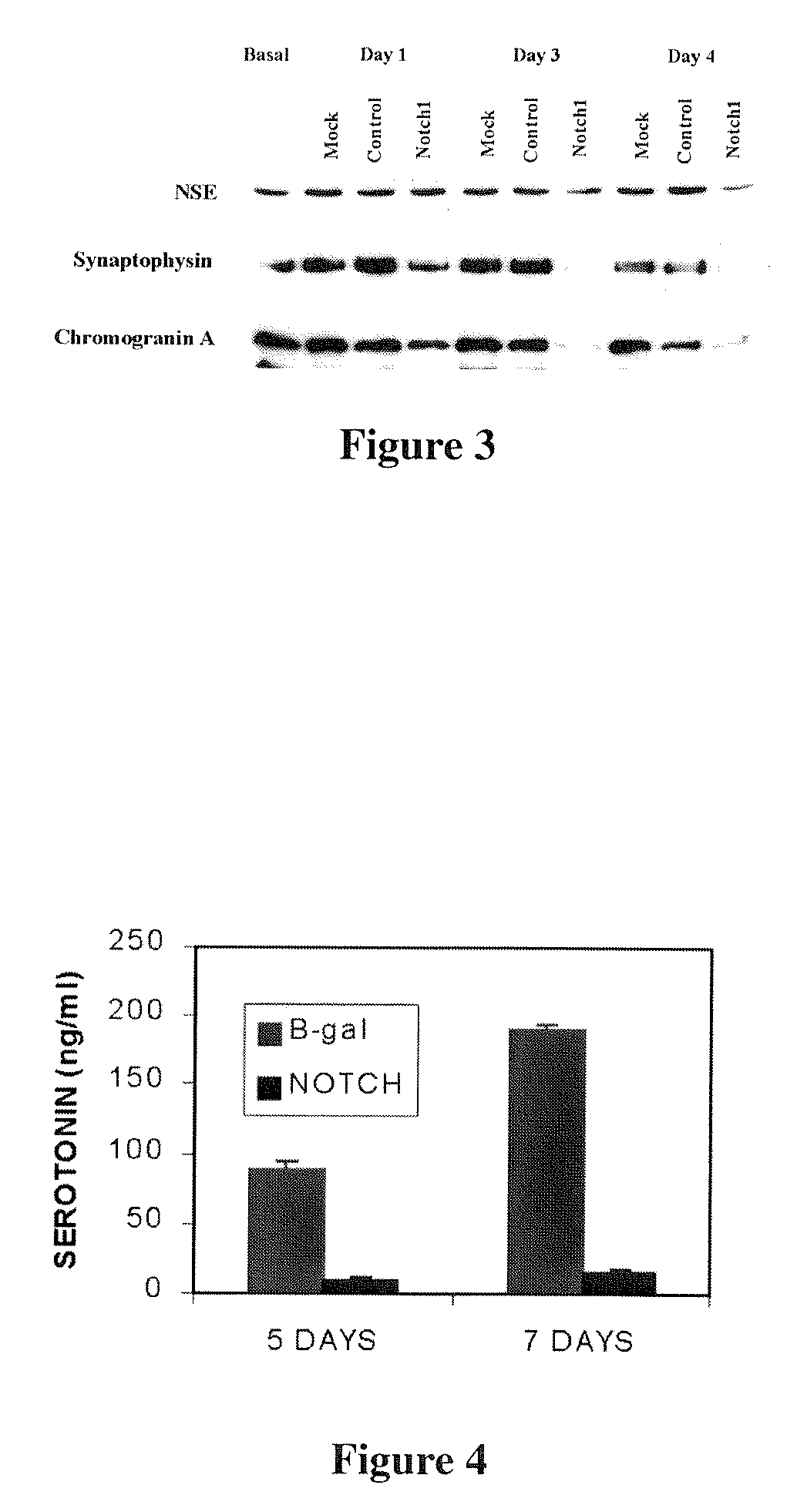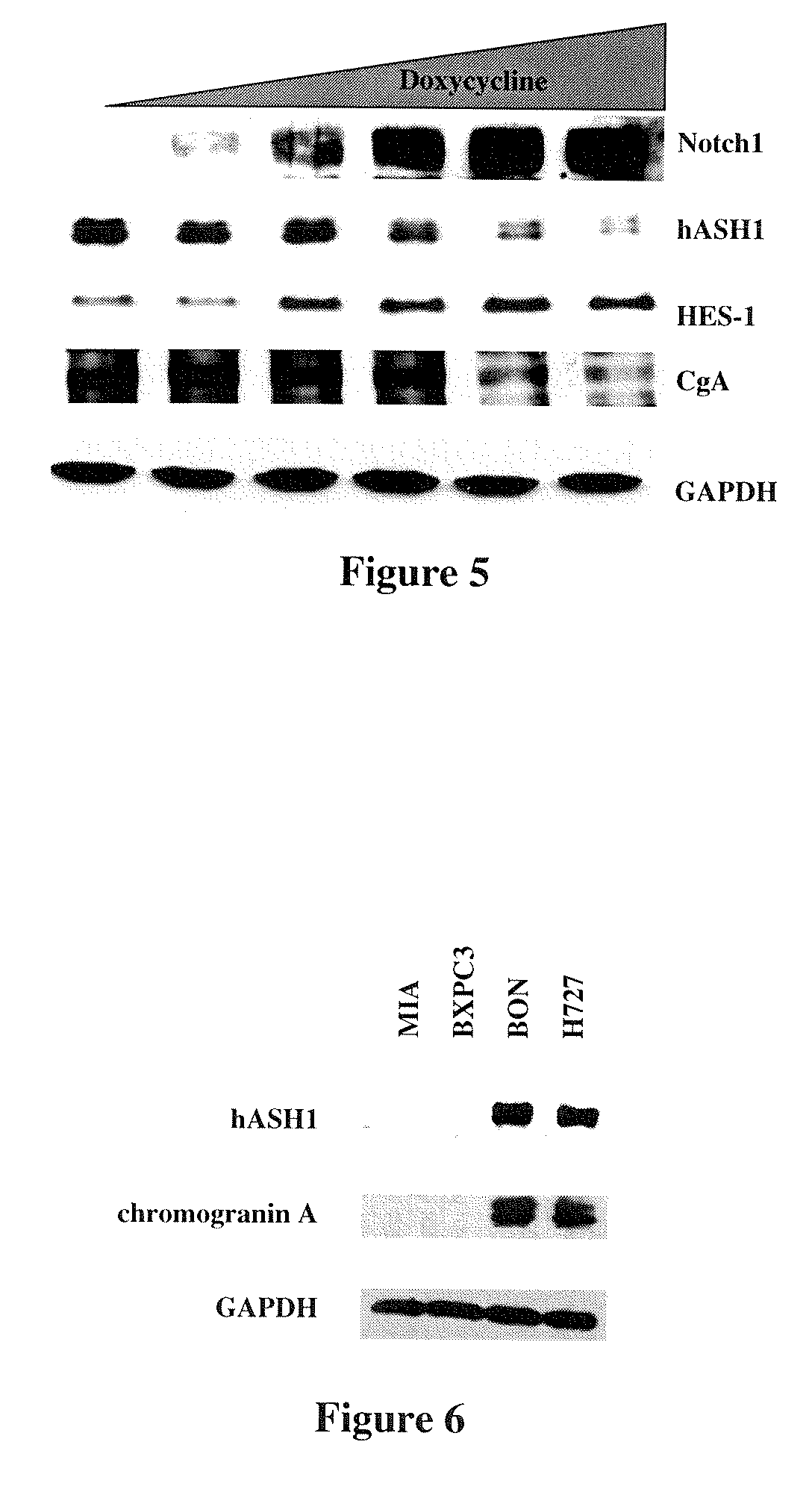Modulating notch1 signaling pathway for treating neuroendocrine tumors
a neuroendocrine tumor and signaling pathway technology, applied in the direction of biocide, drug composition, peptide/protein ingredients, etc., can solve the problems of limited success of chemotherapy in patients with ne tumors, limited efficacy of chemoembolization, radiofrequency ablation, etc., to inhibit growth or neuroendocrine hormone production, increase the expression level of the endogenous notch1 gene, and inhibit the effect of neuroendocrine tumor growth
- Summary
- Abstract
- Description
- Claims
- Application Information
AI Technical Summary
Benefits of technology
Problems solved by technology
Method used
Image
Examples
example 1
Notch1 Expression in Human NE Cells
[0101]Three NE tumor cell lines, i.e., a human metastatic pancreatic carcinoid cell line, BON, (Evers B M, et al., Gastroenterology 1991; 101:303-311) a human pulmonary carcinoid cell lines H727, (Borges M, et al., Nature 1997; 386:852-855) and a human medullary thyroid cancer cell line TT, (Chen H, et al., Surgery 1996; 120:168-172) were used to study the biological consequences of Notch1 activation in NE tumors in vitro. In order to determine the effect of Notch1 overexpression in BON cells, high titer recombinant adenoviruses were used. Briefly, an intracellular Notch1 fragment, containing residues 1759-2556, was cloned into a pAdTrackCMV shuttle plasmid and then co-transfected with pAdEASY1 into BJ5183 bacterial competent cells to generate recombinant adenoviruses. As a control, the E. coli beta-galactosidase (B-gal) gene was also cloned into shuttle plasmids. Notch1 and B-gal containing adenoviruses were used to infect BON cells. BON cells nor...
example 2
The Notch1 Signaling Pathway Is Conserved in Human NE Tumor Cells
[0102]As discussed above, the activated form of Notch1 translocates to the nucleus and increases expression of HES-1. (Artavanis-Tsakonas S, et al., Science 1999; 284:770-776) HES-1, a transcriptional repressor, then inhibits expression of hASH1. BON, H727, and TT cells were analyzed for their hASH1 expression and HES-1 levels after induction of Notch1. As shown in FIG. 2, BON cells normally express high levels of hASH1 and detectable levels of HES-1 protein. However, increased Notch1 activity led to a dramatic reduction in hASH1 proteins by 24 hours that was not seen in the control. In addition, there was a corresponding increase in HES-1 protein. Similar changes were also seen with Notch1 activation in pulmonary carcinoid H727 and medullary thyroid cancer TT cells (not shown). Therefore, the Notch1 signaling pathway is conserved in human NE tumors cells.
example 3
Notch1 Regulates The Endocrine Phenotype of NE Tumor Cells
[0103]NE tumors typically secrete biologically active hormones and NE markers, which are thought to contribute to the virulence and metastatic potential of these malignancies. (von Wichert G, et al., Cancer Res 2000; 60:4573-4581; Eriksson B, et al., Digestion 2000; 62 Suppl 1:33-38) Furthermore, excessive hormone production causes significant, debilitating symptoms for patients with NE tumors, especially carcinoids. Notch1 signaling plays an essential role in the endocrine differentiation of the GI tract. (Artavanis-Tsakonas S, et al., Science 1999; 284:770-776; Jensen J, et al., Diabetes 2000; 49:163-176; Apelqvist A, et al., Nature 1999; 400:877-881) Usually, carcinoid tumors secrete high levels of both chromogranin A and serotonin due to disregulated hormone production. Similarly, BON and H727 cells had high levels of the NE marker chromogranin A by Western analysis. However, a significant decrease in chromogranin A and s...
PUM
| Property | Measurement | Unit |
|---|---|---|
| concentration | aaaaa | aaaaa |
| volumes | aaaaa | aaaaa |
| diameter | aaaaa | aaaaa |
Abstract
Description
Claims
Application Information
 Login to View More
Login to View More - R&D
- Intellectual Property
- Life Sciences
- Materials
- Tech Scout
- Unparalleled Data Quality
- Higher Quality Content
- 60% Fewer Hallucinations
Browse by: Latest US Patents, China's latest patents, Technical Efficacy Thesaurus, Application Domain, Technology Topic, Popular Technical Reports.
© 2025 PatSnap. All rights reserved.Legal|Privacy policy|Modern Slavery Act Transparency Statement|Sitemap|About US| Contact US: help@patsnap.com



